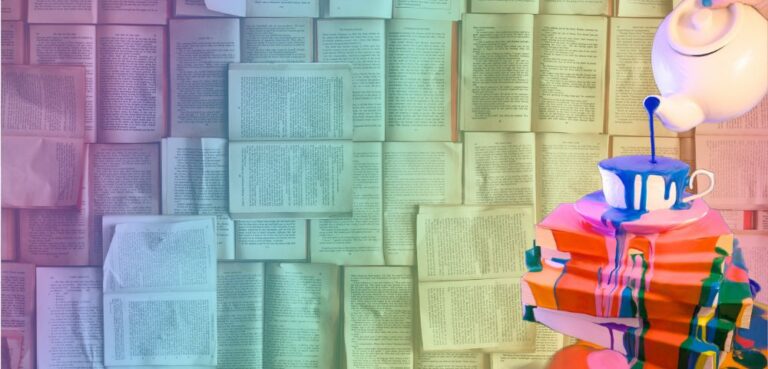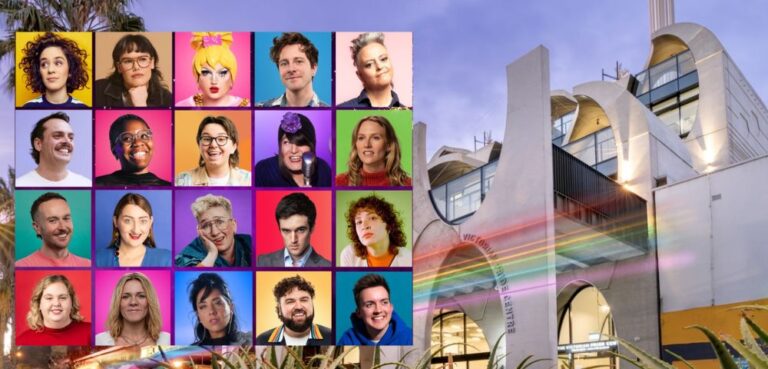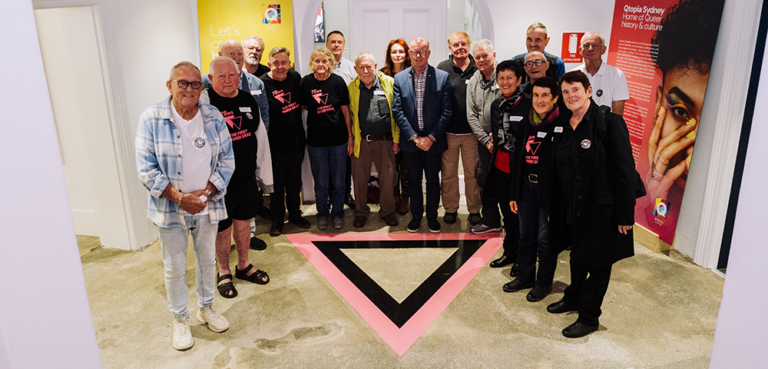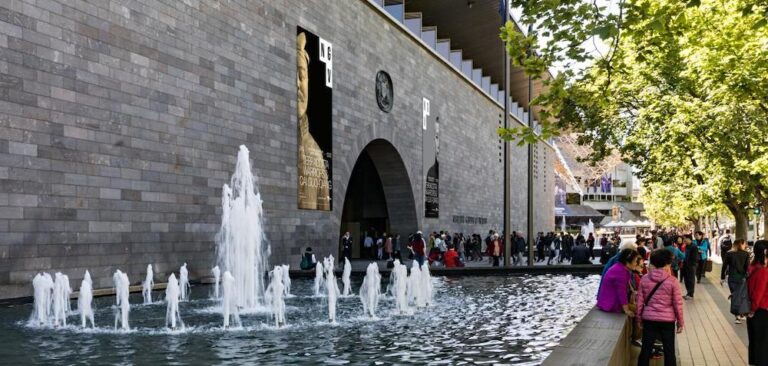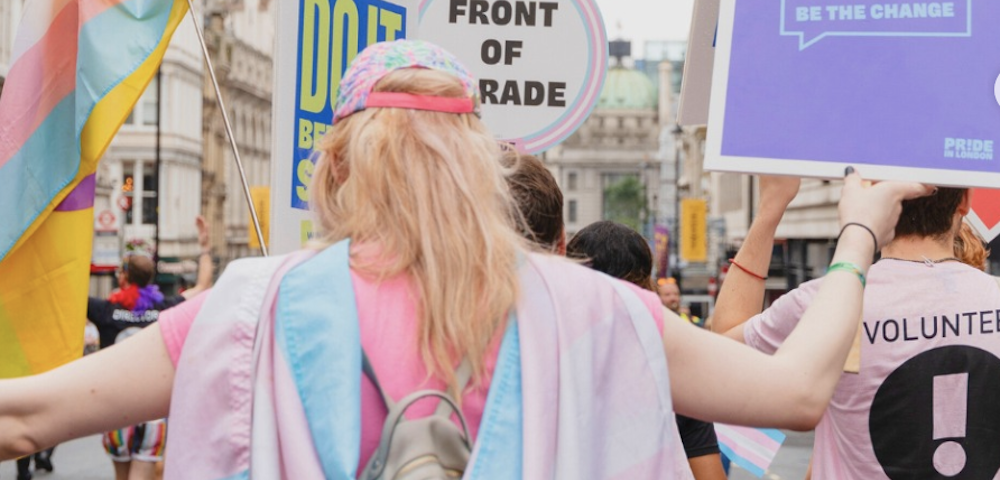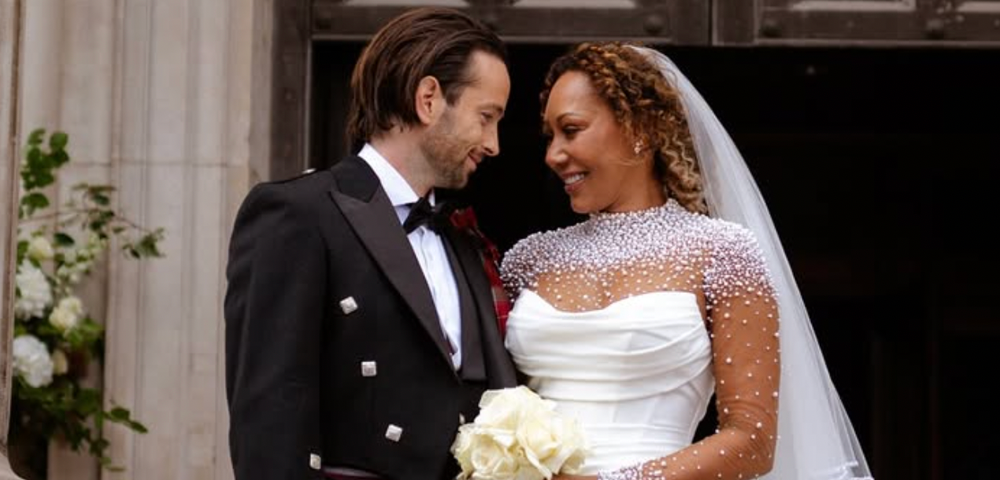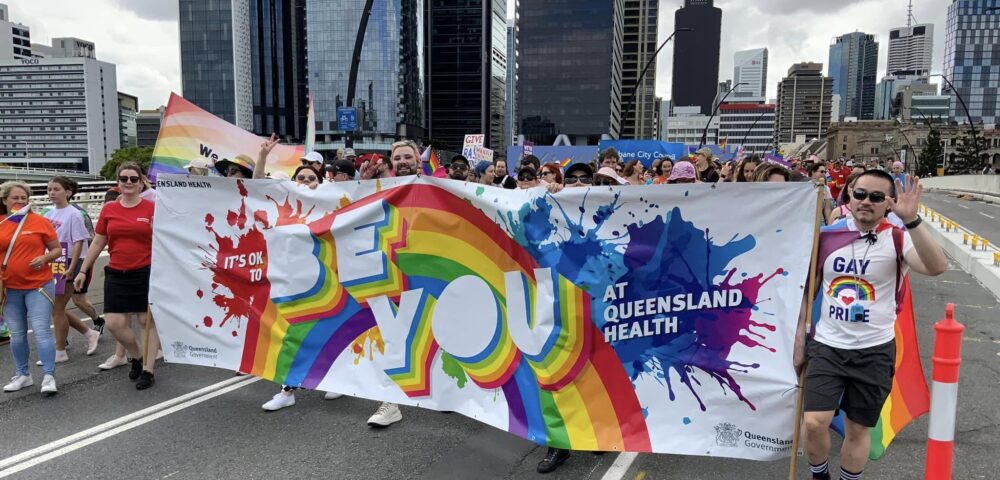
Powerful New Monument For LGBTQ+ Victims of The Holocaust Unveiled in Paris
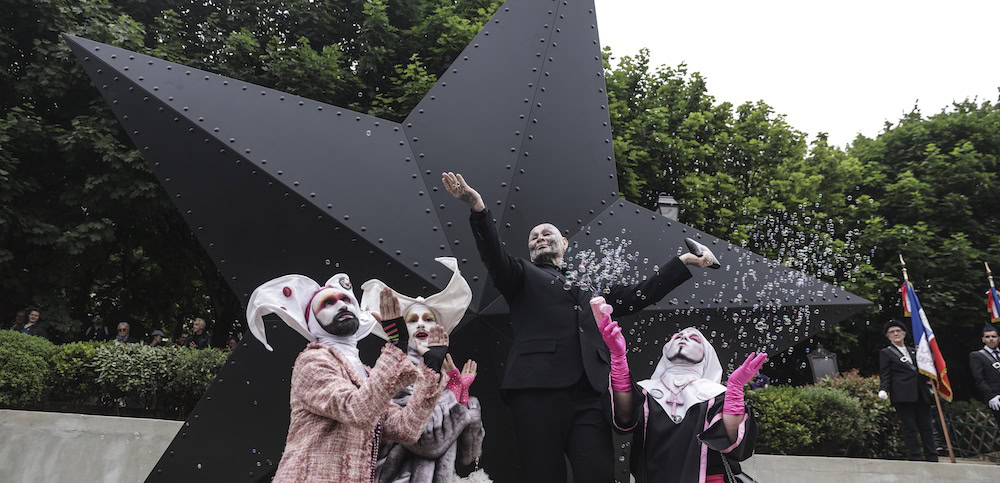
Unveiled on Friday 17 May, a striking new monument honours the memory of LGBTQIA+ people persecuted and murdered under the Nazi regime during World War II has been unveiled in Paris.
Falling on the International Day Against Homophobia, Biphobia, and Transphobia (known better as IDAHOBIT), the unveiling was a deliberate gesture of solidarity between the traumas of the past experienced by LGBTQIA people, and the struggles still faced today.
“We didn’t know, unfortunately, that this monument would be inaugurated at one of the worst moments we’re going through right now,” said Paris’ deputy mayor Jean-Luc Roméro, referring to the recent anti-LGBTQIA+, and particularly anti-trans, rhetoric and policy being passed in the US by President Donald Trump.
“We’ve never experienced such setback in the United States, with what’s happening to trans people,” Roméro said.
“Historical recognition means saying ‘this happened’ and ‘we don’t want it to happen again’,” said Paris mayor Anne Hidalgo.
The monument, designed by queer artist Jean-Luc Verna, takes the form of a large star-shaped wand lying on the ground. One side is silver and reflective, the other dark and matte.
“There’s a black side in front of us, forcing us to remember,” said Verna. “At certain times of the day, it casts a long shadow on the ground, evoking the dangers looming over, sadly.”
They said the silver side represents “the colour of time passing, with the Paris sky moving as quickly as public opinion, which can change at any moment,” Verna said.
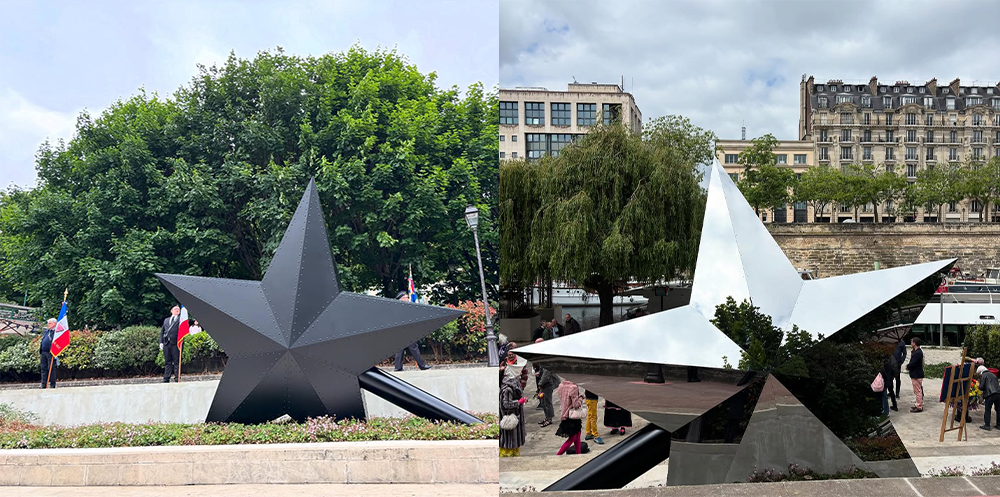
Verna created the memorial monument in collaboration with the association Les “Oublié-e-s” de la Mémoire (The Forgotten of Memory), which has been working since 2003 to raise awareness of homosexual deportation and its recognition in France and beyond.
It is the first national memorial in France to recognise queer victims of the Holocaust — a historic and long-overdue act of remembrance.
The unveiling ceremony was attended by LGBTQIA+ advocates, city officials, Jewish community leaders and relatives of Holocaust victims, where flowers were laid, and names were spoken aloud in memory of the lives lost and affected.
View this post on Instagram
LGBTQ+ people in the Holocaust: what the pink triangle means
During the Nazi regime of WWII, thousands of queer people — especially gay and bisexual men — were arrested under Paragraph 175 of the German criminal code, which criminalised homosexuality. Many were deported to concentration camps, where they were forced to wear pink triangles to mark them as “deviants”.
The United States Holocaust Memorial Museum estimates that between 1933 and 1945, 100,000 gay men were arrested. Approximately 50% resulted in convictions, and in some cases, this led to their imprisonment in concentration camps.
While gay and bisexual men were primarily affected in this way (due to the criminalisation of male homosexuality), lesbian communities were also targeted and destroyed by the Nazi regime. Previous to WWII, thanks to Magnus Hirschfeld and the Institute for Sexual Science, Germany was at forefront of transgender advocacy, research and medical support — but once WWII began, trans people were targeted and arrested; some forcibly detransitioned, and others killed in concentration camps. The exact number of trans people killed during the Holocaust is unknown.
For decades after the war, the suffering of queer victims went unacknowledged. Many survivors of Paragraph 175 imprisonment remained criminalised, and were excluded from reparations. It wasn’t until the 1970s that gay rights activists began reclaiming the pink triangle as a symbol of protest and remembrance.
During the AIDS crisis in the 1980s, Activist group ACT UP inverted the triangle and emblazoned it with the words SILENCE = DEATH — a haunting call to action that remains iconic today.
Now, the pink triangle endures as a symbol of resilience and queer resistance.
If this story brought up difficult feelings, support is available. Contact QLife on 1800 184 527 or Lifeline on 13 11 14.
